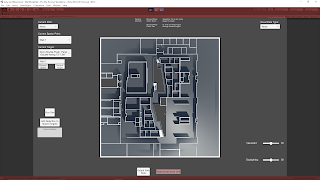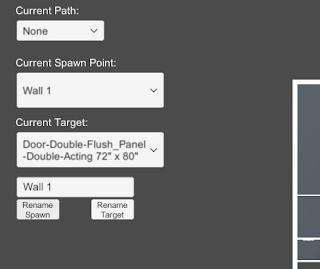March 22, 2021
Highlight Selection
Architecture AI Project
Overview
I was having a bug come up with our selection highlight effect where sometimes when moving around quickly, several objects could be highlighted at the same time. This is not intended, as there should ever only be a single object highlighted at once, and it should be the object the user is currently hovering over with the mouse.
Bugfix
Assessing Bug Case
Since it happened generally with moving around quickly in most cases, it was difficult to nail down the direct cause at first. After testing a while though, it was noticeable that the bug seemed to occur more often when running over an object that was non-selectable, onto a selectable object. Further testing showed this was the case when directly moving from a non-selectable to a selectable object right afterward. This helped isolate where the problem may be.
Solution
It turns out in my highlight selection SelectionManager class, I was only unhighlighting an object if the ray did not hit anything or it did both: 1) hit an object and 2) that object had a Selectable component. I was however not unhighlighting an object if the ray: 1) hit an object and 2) that object did NOT have a Selectable component. This logic matched up with the bug cases I was seeing, so this was the area I focused on fixing.
It turns out that was where the error was coming in. By adding an additional catch for this case to also unhighlight an object when moving directly from a selectable object to a non-selectable and back to a selectable object again, the bug was fixed.
Architecture AI Project: Fixing Selection Highlight Bug from Steve Lilley on Vimeo.
Summary
This was a case of just making sure you are properly exiting states of your system given all cases where you want to exit. This could probably use a very small and simple state machine setup, but it seemed like overkill for this part of the project. It may be worth moving towards that type of solution if it gets any more complex however.
via Blogger http://stevelilleyschool.blogspot.com/2021/03/architecture-ai-pathing-project-fixing_22.html


